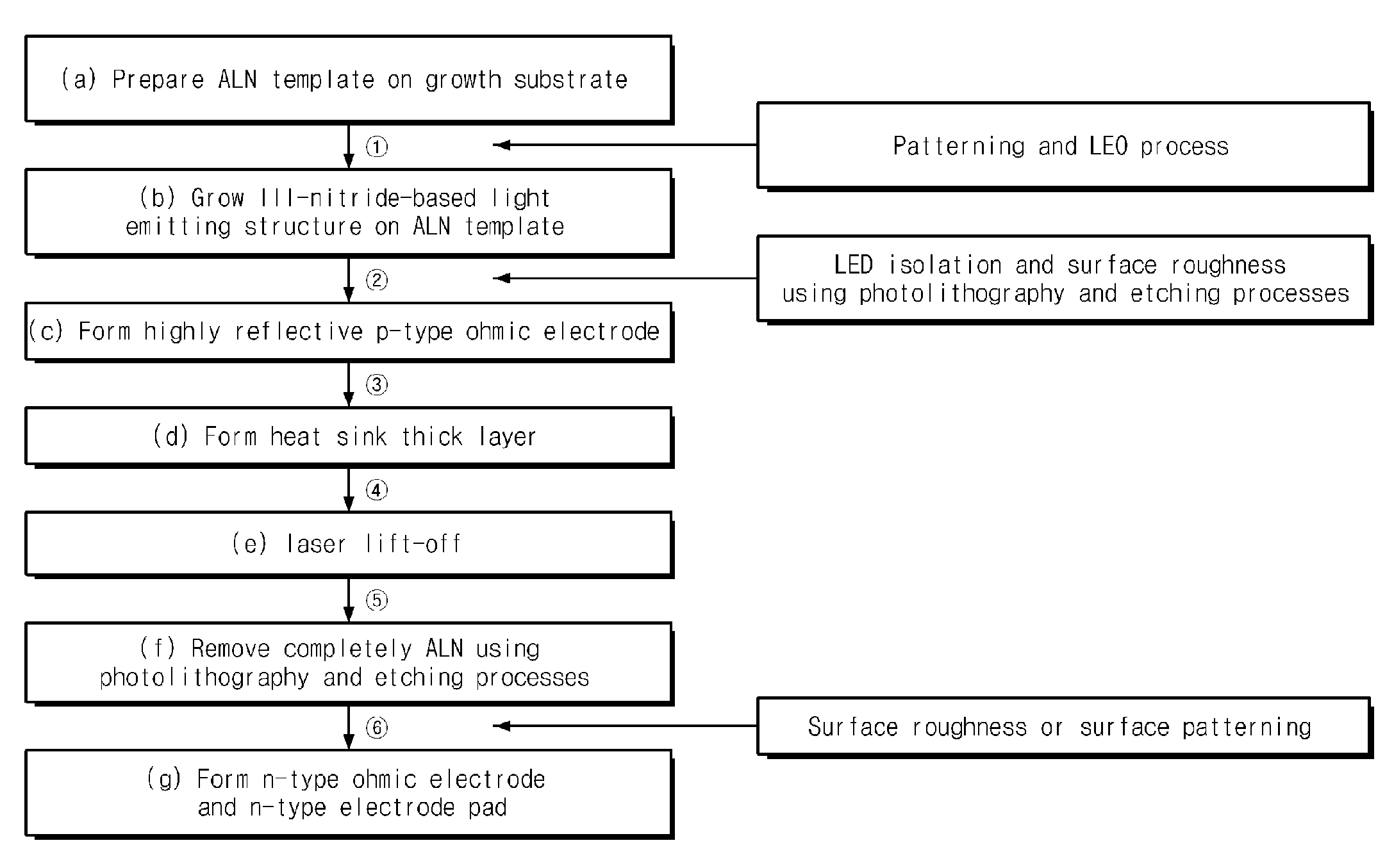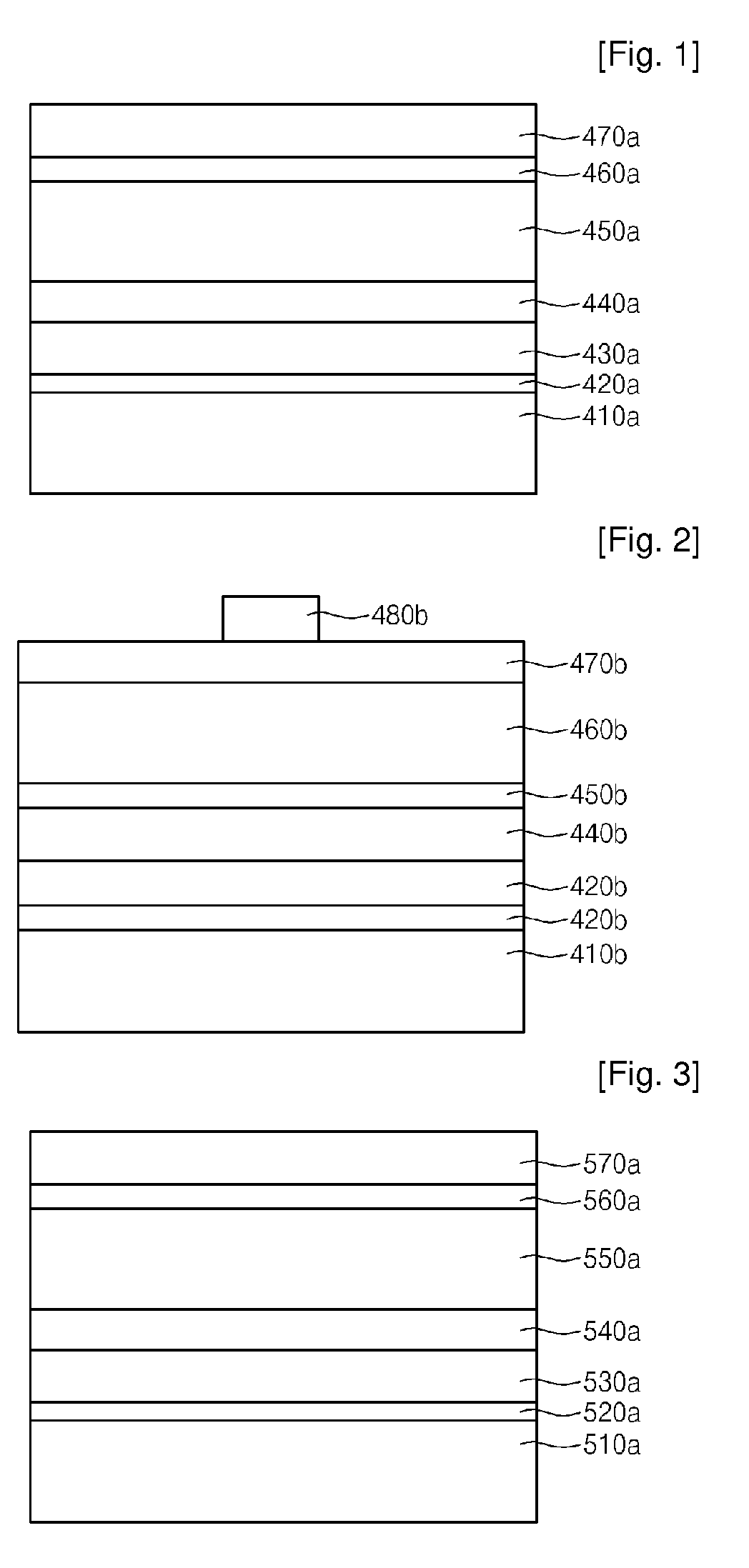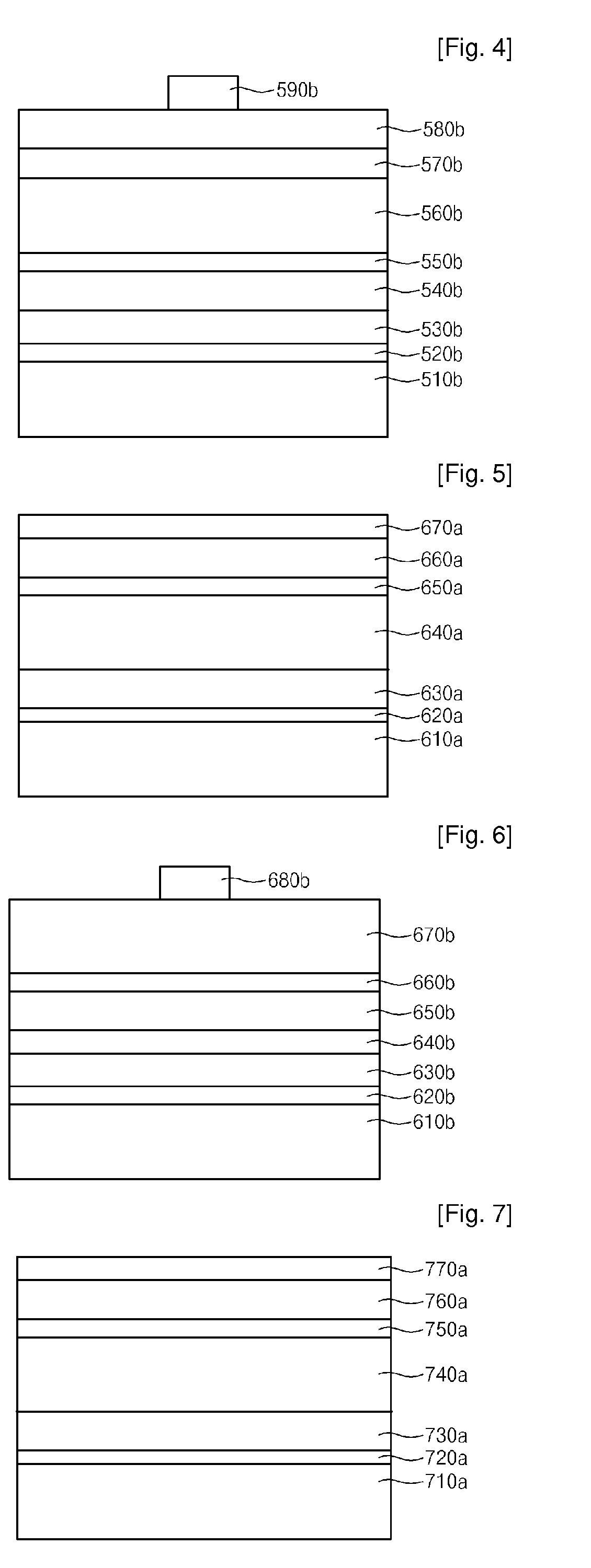Semiconductor Device and Method of Fabricating the Same
a semiconductor and semiconductor technology, applied in the field of semiconductor devices, can solve the problems of unable to provide a substrate adapted to grow a nitride-based semiconductor having a high quality, difficulty in growing an ingan layer and an algan layer including a large amount of indium (in) or aluminum, and achieves the effects of high brightness, high capacity and large area
- Summary
- Abstract
- Description
- Claims
- Application Information
AI Technical Summary
Benefits of technology
Problems solved by technology
Method used
Image
Examples
first embodiment
[0105]FIGS. 1 and 2 are sectional views showing p-down vertical-structured nitride-based light emitting devices fabricated by using a first tunnel junction layer introduced into an upper portion of an undoped nitride-based layer serving as a buffering layer according to the present invention.
[0106]As shown in FIG. 1, in order to fabricate a nitride-based light emitting device having the large area, high capacity and high brightness according to the present invention, a nucleation layer 420a including amorphous GaN or AlN formed at the temperature of 600° C. or below is deposited on a sapphire substrate 410a, which is an insulating growth substrate, at a thickness of 100 nm or less. Then, after forming an undoped nitride-based layer 430a serving as a buffer layer and having a thickness of 3 nm or less, a high-quality first tunnel junction layer 440a is formed on the undoped nitride-based layer 430a. After that, an n-type nitride-based thin cladding layer 450a, a multi-quantum well ni...
second embodiment
[0122]FIGS. 3 and 4 are sectional views showing p-down vertical-structured nitride-based light emitting devices fabricated by using a first tunnel junction layer introduced into an upper portion of an undoped nitride-based layer serving as a buffering layer according to the present invention.
[0123]As shown in FIGS. 3 and 4, the nitride-based light emitting structure stacked on the insulating growth substrate and the p-down vertical-structured nitride-based light emitting device are substantially identical to those of the first embodiment, except for an n-type ohmic current spreading layer 580b, which is a high transparent conductive thin film layer formed on the first tunnel junction layer 570b.
[0124]Preferably, the high transparent conductive thin film layer formed on the first tunnel junction layer 570b, that is, the n-type ohmic current spreading layer 580b includes transparent conducive oxide (TCO) or transitional metal-based transparent conductive nitride (TCN). Here, TCO is t...
third embodiment
[0130]FIGS. 5 and 6 are sectional views showing p-down vertical-structured nitride-based light emitting devices fabricated by using a second tunnel junction layer introduced into an upper portion of a p-type nitride-based cladding layer according to the present invention.
[0131]As shown in FIG. 5, in order to fabricate a nitride-based light emitting device having the large area, high capacity and high brightness according to the present invention, a nucleation layer 620a including amorphous GaN or AlN formed at the temperature of 600° C. or below is deposited on a sapphire substrate 610a, which is an insulating growth substrate, at a thickness of 100 nm or less. Then, after forming an undoped nitride-based layer 630a serving as a buffer layer and having a thickness of 3 nm or less, an n-type nitride-based thin cladding layer 640a, a multi-quantum well nitride-based active layer 650a, and a p-type nitride-based cladding layer 660a are sequentially formed on the undoped nitride-based l...
PUM
 Login to View More
Login to View More Abstract
Description
Claims
Application Information
 Login to View More
Login to View More - R&D
- Intellectual Property
- Life Sciences
- Materials
- Tech Scout
- Unparalleled Data Quality
- Higher Quality Content
- 60% Fewer Hallucinations
Browse by: Latest US Patents, China's latest patents, Technical Efficacy Thesaurus, Application Domain, Technology Topic, Popular Technical Reports.
© 2025 PatSnap. All rights reserved.Legal|Privacy policy|Modern Slavery Act Transparency Statement|Sitemap|About US| Contact US: help@patsnap.com



